Jonathan Viventi
Low-Rank Nonlinear Decoding of $μ$-ECoG from the Primary Auditory Cortex
May 06, 2020
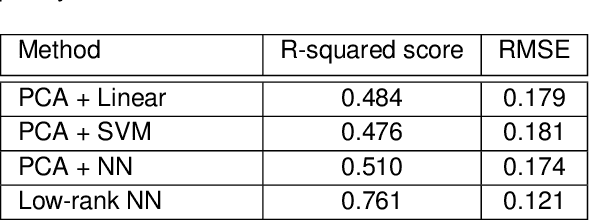

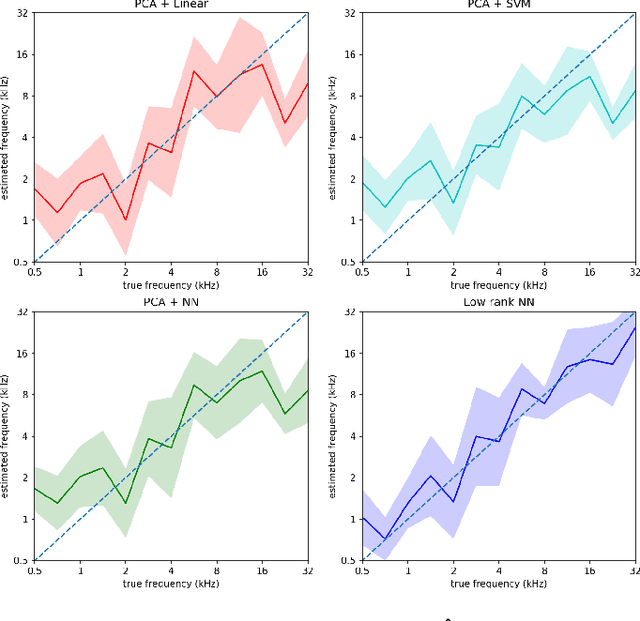
Abstract:This paper considers the problem of neural decoding from parallel neural measurements systems such as micro-electrocorticography ($\mu$-ECoG). In systems with large numbers of array elements at very high sampling rates, the dimension of the raw measurement data may be large. Learning neural decoders for this high-dimensional data can be challenging, particularly when the number of training samples is limited. To address this challenge, this work presents a novel neural network decoder with a low-rank structure in the first hidden layer. The low-rank constraints dramatically reduce the number of parameters in the decoder while still enabling a rich class of nonlinear decoder maps. The low-rank decoder is illustrated on $\mu$-ECoG data from the primary auditory cortex (A1) of awake rats. This decoding problem is particularly challenging due to the complexity of neural responses in the auditory cortex and the presence of confounding signals in awake animals. It is shown that the proposed low-rank decoder significantly outperforms models using standard dimensionality reduction techniques such as principal component analysis (PCA).
Multi Resolution LSTM For Long Term Prediction In Neural Activity Video
Jul 03, 2018

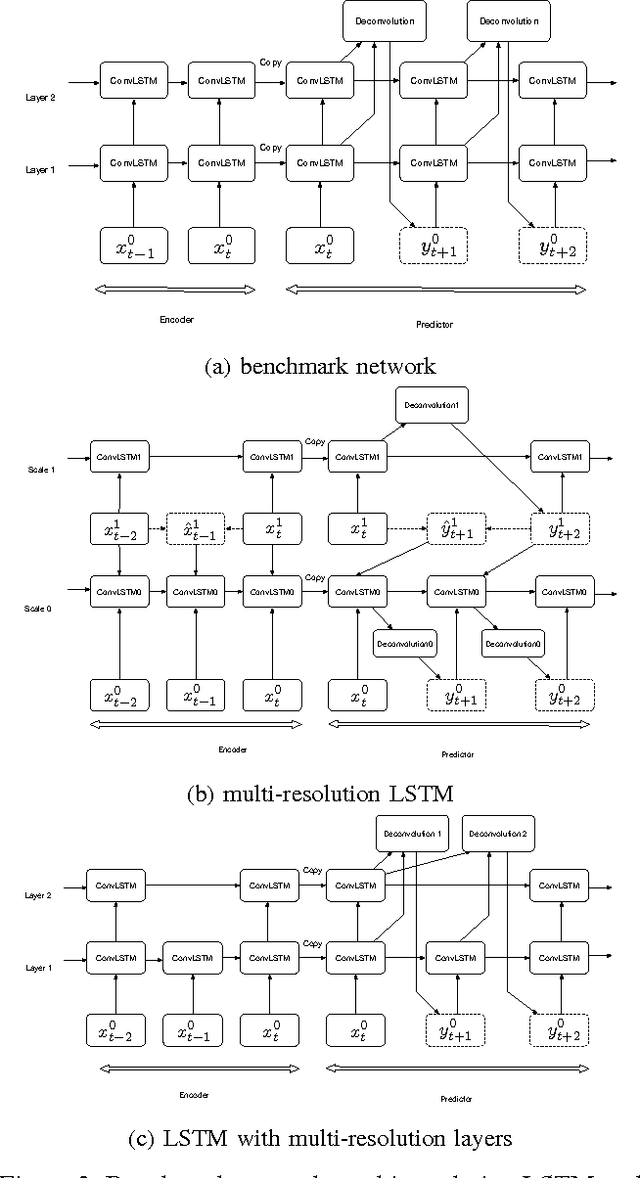

Abstract:Epileptic seizures are caused by abnormal, overly syn- chronized, electrical activity in the brain. The abnor- mal electrical activity manifests as waves, propagating across the brain. Accurate prediction of the propagation velocity and direction of these waves could enable real- time responsive brain stimulation to suppress or prevent the seizures entirely. However, this problem is very chal- lenging because the algorithm must be able to predict the neural signals in a sufficiently long time horizon to allow enough time for medical intervention. We consider how to accomplish long term prediction using a LSTM network. To alleviate the vanishing gradient problem, we propose two encoder-decoder-predictor structures, both using multi-resolution representation. The novel LSTM structure with multi-resolution layers could significantly outperform the single-resolution benchmark with similar number of parameters. To overcome the blurring effect associated with video prediction in the pixel domain using standard mean square error (MSE) loss, we use energy- based adversarial training to improve the long-term pre- diction. We demonstrate and analyze how a discriminative model with an encoder-decoder structure using 3D CNN model improves long term prediction.
Diversity encouraged learning of unsupervised LSTM ensemble for neural activity video prediction
Jul 03, 2018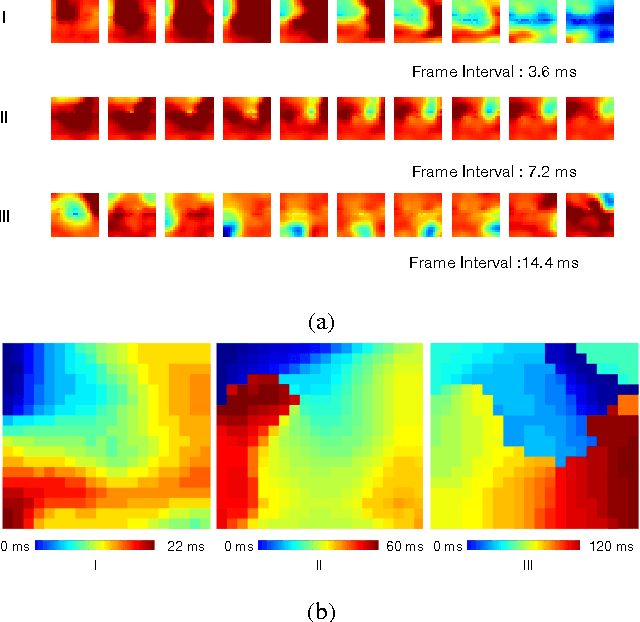
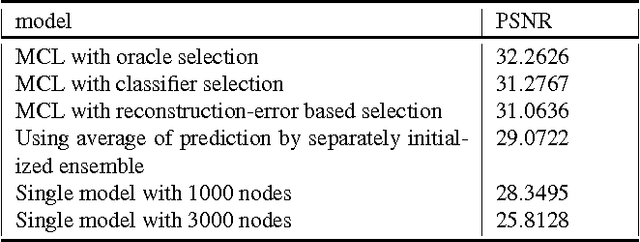
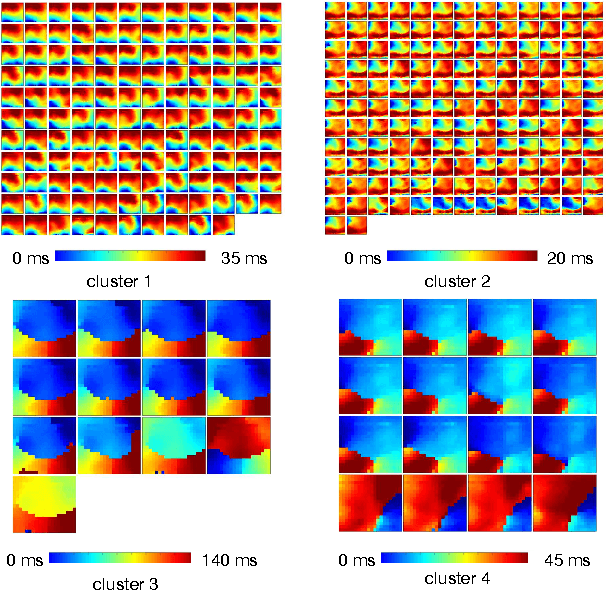
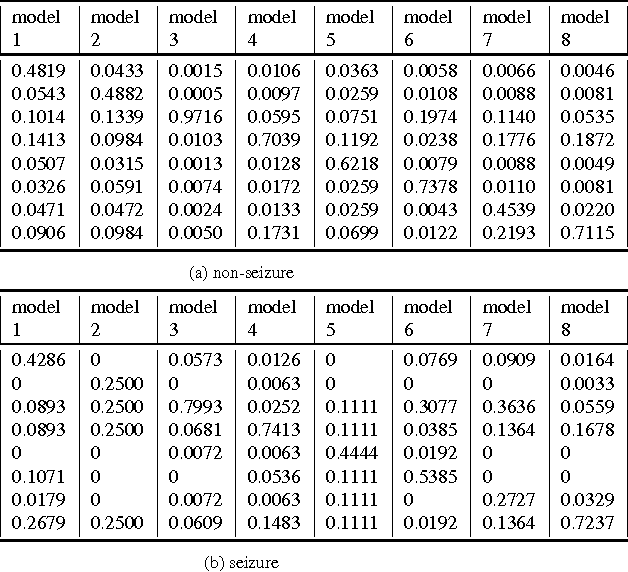
Abstract:Being able to predict the neural signal in the near future from the current and previous observations has the potential to enable real-time responsive brain stimulation to suppress seizures. We have investigated how to use an auto-encoder model consisting of LSTM cells for such prediction. Recog- nizing that there exist multiple activity pattern clusters, we have further explored to train an ensemble of LSTM mod- els so that each model can specialize in modeling certain neural activities, without explicitly clustering the training data. We train the ensemble using an ensemble-awareness loss, which jointly solves the model assignment problem and the error minimization problem. During training, for each training sequence, only the model that has the lowest recon- struction and prediction error is updated. Intrinsically such a loss function enables each LTSM model to be adapted to a subset of the training sequences that share similar dynamic behavior. We demonstrate this can be trained in an end- to-end manner and achieve significant accuracy in neural activity prediction.
 Add to Chrome
Add to Chrome Add to Firefox
Add to Firefox Add to Edge
Add to Edge